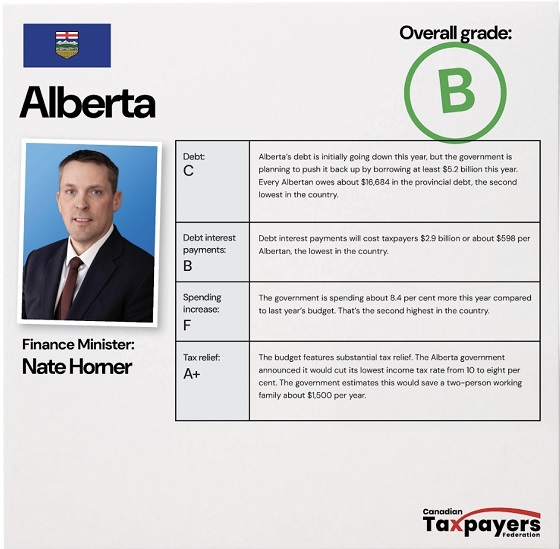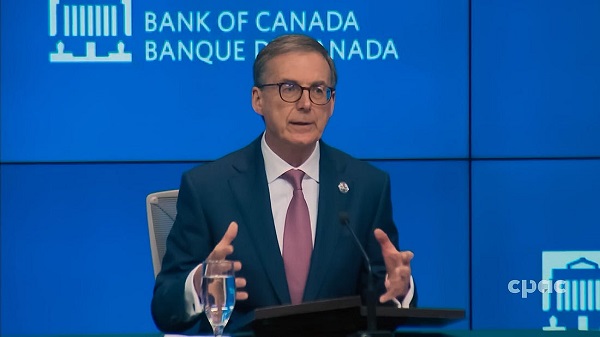Economy
Carney’s Promise of Expediting Resource Projects Feels Like a Modern Version of the Wicked Stepmother from Disney’s Cinderella

From Energy Now
By Tammy Nemeth
Canada’s ongoing saga around interminable delays for infrastructure and resource development has not necessarily improved under Mark Carney’s Liberal government. Hopes were raised in oil, gas, and mining boardrooms with the seemingly sensible words coming from Natural Resources Minister Tim Hodgson and Prime Minister Carney himself about expediting projects and developing Canada as a (clean) and conventional energy superpower. But that “clean” part is usually whispered like a corporate secret, possibly in the hope that Alberta and others won’t notice. This situation feels like a modern version of Cinderella, where promises come from the wicked stepmother with impossible conditions: The big “IF”.
In Disney’s 1950 animated film Cinderella, there is a scene where Cinderella presents an invitation to the royal ball to her stepmother, Lady Tremaine. Despite Cinderella’s eligibility, Lady Tremaine imposes a condition: She may attend only IF she completes an overwhelming list of chores. This disingenuous offer, cloaked in fairness, ensures Cinderella’s exclusion, much to the delight of her jealous stepsisters. Similarly, Canada’s resource development process appears to promise opportunity while imposing conditions that may prove unattainable.
The premiers from all the provinces were invited by the Prime Minister to come cap-in-hand with a list of projects they feel are in the “national interest”. Some suggested it was like giving a business pitch to the panel at Dragon’s Den. Hardly an appropriate situation to be in for the First Ministers of the Federation. It is a revealing indication of how far the consideration of the Premiers has fallen in the esteem of Ottawa and its media mouthpieces. Nevertheless, the Premiers duly arrived in Saskatoon to have a conversation about Ottawa’s ambitions for Canadian resource and industrial development and presented their list of projects. Most left the meeting hoping for the best.
Later that day, Prime Minister Carney released his criteria for acceptable projects, which are quite vague—the devil is always in the details. From the Prime Minister’s website:
“As a first step, First Ministers discussed projects of national interest which fit the following criteria, subject to consultation with Indigenous Peoples whose rights may be affected:
- Strengthen Canada’s autonomy, resilience, and security.
- Offer undeniable benefits to Canada and support economic growth.
- Have a high likelihood of successful execution.
- Are a high priority for Indigenous leaders.
- Have clean growth potential, such as the use of clean technologies and sustainable practices.”
These general statements leave a great deal open to interpretation and much of it is in the eye of the beholder. For example, Quebec will not join a consensus or support any project for which it doesn’t receive a direct benefit in terms of ongoing employment, royalty sharing, or other revenue.
As for conventional energy, Prime Minister Carney said he supports decarbonized oil. This would be a nod to the proposed Carbon Capture Storage (CCS) project of the Pathways Alliance, an incredibly expensive proposition for which the alliance is seeking various tax breaks and inducements to commit to the multi-billion dollar endeavour. It seems that support for an oil pipeline to the east or west would only tentatively come once that CCS project is complete or nearing completion.
Carney also says that there needs to be a “national consensus” on projects in order to be short listed. Who decides what is in the national interest or if a “national consensus” exists? Well, that would be the Prime Minister’s squad in Ottawa. What criteria or metrics will be used for those determinations? No one outside Carney’s circle knows. Prime Minister Carney said recently there would be a “process put in place to arrive at a [national] consensus” on projects.
If the Premiers thought these important details might be clarified in the implementing legislation, then they thought wrong. Bill C-5, the One Canadian Economy Act, merely codifies the five generic principles, mentions “energy” generally (which can be interpreted many ways), and does nothing to solve the problems with existing legislation that has created the regulatory morass for projects in the first place. Creating a “fast track” for only certain politically select projects, to bypass issues with the “regular track”, proves the existing system is too slow and ought to be corrected: Politically selected exceptions do not solve systemic problems.
The legislation also grants Cabinet sole power and discretion without any scrutiny or transparency on the decisions: “in respect of a project, the Governor in Council [Cabinet] may consider any factor that the Governor in Council considers relevant…” [emphasis added]. That is a very broad power that can be wielded in any number of ways, including forcing uneconomic high voltage electricity interconnections from eastern Canada to western provinces like Saskatchewan and Alberta. Essentially, Cabinet can do whatever it wants with respect to so-called “national” projects and is protected by Cabinet confidence in making those decisions.
Canadian premiers and the oil, gas, and mining companies are being confronted with a whole lot of “IFs” for potential projects all of which will be left to the arbitrary and secretive discretion of Cabinet. Which company will put the investment of time and money into an application process that has so many potential arbitrary and capricious ways to be rejected? So far, Canada’s process under its net zero by 2050 framework has been like betting on Cinderella to make the ball without a fairy godmother.
Prime Minister Carney is saying he encourages resource development applications but is offering several conditions that may prove impossible to meet for Alberta, Saskatchewan, and resource companies. Resource companies, wary of investing in a process rife with uncertainty, may hesitate to commit resources to projects that face rejection on subjective and capricious grounds. If Canada wants to dance at the global energy ball, it needs clear procedural and regulatory rules, not a wicked stepmother’s to-do list.
As Jess Kline of the National Post says, the criteria, “pretty much gives politicians licence to reject any project for any reason at all.” While many may be cautiously optimistic that such arbitrariness will be overcome by pragmatism and the realities of an economy hungry for reliable affordable energy, could it be that Canada’s resource development is facing the veiled meanness of a wicked stepmother?
Ambiguity is the enemy of action. Canada needs a clear, fair, timely approval process that balances environmental goals with economic needs. Without it, provinces and industries may stay stuck in an ongoing story where opportunities are promised but never delivered.
Tammy Nemeth is a U.K.-based energy analyst
Alberta
Albertans need clarity on prime minister’s incoherent energy policy

From the Fraser Institute
By Tegan Hill
The new government under Prime Minister Mark Carney recently delivered its throne speech, which set out the government’s priorities for the coming term. Unfortunately, on energy policy, Albertans are still waiting for clarity.
Prime Minister Carney’s position on energy policy has been confusing, to say the least. On the campaign trail, he promised to keep Trudeau’s arbitrary emissions cap for the oil and gas sector, and Bill C-69 (which opponents call the “no more pipelines act”). Then, two weeks ago, he said his government will “change things at the federal level that need to be changed in order for projects to move forward,” adding he may eventually scrap both the emissions cap and Bill C-69.
His recent cabinet appointments further muddied his government’s position. On one hand, he appointed Tim Hodgson as the new minister of Energy and Natural Resources. Hodgson has called energy “Canada’s superpower” and promised to support oil and pipelines, and fix the mistrust that’s been built up over the past decade between Alberta and Ottawa. His appointment gave hope to some that Carney may have a new approach to revitalize Canada’s oil and gas sector.
On the other hand, he appointed Julie Dabrusin as the new minister of Environment and Climate Change. Dabrusin was the parliamentary secretary to the two previous environment ministers (Jonathan Wilkinson and Steven Guilbeault) who opposed several pipeline developments and were instrumental in introducing the oil and gas emissions cap, among other measures designed to restrict traditional energy development.
To confuse matters further, Guilbeault, who remains in Carney’s cabinet albeit in a diminished role, dismissed the need for additional pipeline infrastructure less than 48 hours after Carney expressed conditional support for new pipelines.
The throne speech was an opportunity to finally provide clarity to Canadians—and specifically Albertans—about the future of Canada’s energy industry. During her first meeting with Prime Minister Carney, Premier Danielle Smith outlined Alberta’s demands, which include scrapping the emissions cap, Bill C-69 and Bill C-48, which bans most oil tankers loading or unloading anywhere on British Columbia’s north coast (Smith also wants Ottawa to support an oil pipeline to B.C.’s coast). But again, the throne speech provided no clarity on any of these items. Instead, it contained vague platitudes including promises to “identify and catalyse projects of national significance” and “enable Canada to become the world’s leading energy superpower in both clean and conventional energy.”
Until the Carney government provides a clear plan to address the roadblocks facing Canada’s energy industry, private investment will remain on the sidelines, or worse, flow to other countries. Put simply, time is up. Albertans—and Canadians—need clarity. No more flip flopping and no more platitudes.
Canadian Energy Centre
Cross-Canada economic benefits of the proposed Northern Gateway Pipeline project

From the Canadian Energy Centre
Billions in government revenue and thousands of jobs across provinces
Announced in 2006, the Northern Gateway project would have built twin pipelines between Bruderheim, Alta. and a marine terminal at Kitimat, B.C.
One pipeline would export 525,000 barrels per day of heavy oil from Alberta to tidewater markets. The other would import 193,000 barrels per day of condensate to Alberta to dilute heavy oil for pipeline transportation.
The project would have generated significant economic benefits across Canada.

The following projections are drawn from the report Public Interest Benefits of the Northern Gateway Project (Wright Mansell Research Ltd., July 2012), which was submitted as reply evidence during the regulatory process.
Financial figures have been adjusted to 2025 dollars using the Bank of Canada’s Inflation Calculator, with $1.00 in 2012 equivalent to $1.34 in 2025.
Total Government Revenue by Region
Between 2019 and 2048, a period encompassing both construction and operations, the Northern Gateway project was projected to generate the following total government revenues by region (direct, indirect and induced):

British Columbia
- Provincial government revenue: $11.5 billion
- Federal government revenue: $8.9 billion
- Total: $20.4 billion
Alberta
- Provincial government revenue: $49.4 billion
- Federal government revenue: $41.5 billion
- Total: $90.9 billion
Ontario
- Provincial government revenue: $1.7 billion
- Federal government revenue: $2.7 billion
- Total: $4.4 billion
Quebec
- Provincial government revenue: $746 million
- Federal government revenue: $541 million
- Total: $1.29 billion
Saskatchewan
- Provincial government revenue: $6.9 billion
- Federal government revenue: $4.4 billion
- Total: $11.3 billion
Other
- Provincial government revenue: $1.9 billion
- Federal government revenue: $1.4 billion
- Total: $3.3 billion
Canada
- Provincial government revenue: $72.1 billion
- Federal government revenue: $59.4 billion
- Total: $131.7 billion
Annual Government Revenue by Region
Over the period 2019 and 2048, the Northern Gateway project was projected to generate the following annual government revenues by region (direct, indirect and induced):

British Columbia
- Provincial government revenue: $340 million
- Federal government revenue: $261 million
- Total: $601 million per year
Alberta
- Provincial government revenue: $1.5 billion
- Federal government revenue: $1.2 billion
- Total: $2.7 billion per year
Ontario
- Provincial government revenue: $51 million
- Federal government revenue: $79 million
- Total: $130 million per year
Quebec
- Provincial government revenue: $21 million
- Federal government revenue: $16 million
- Total: $37 million per year
Saskatchewan
- Provincial government revenue: $204 million
- Federal government revenue: $129 million
- Total: $333 million per year
Other
- Provincial government revenue: $58 million
- Federal government revenue: $40 million
- Total: $98 million per year
Canada
- Provincial government revenue: $2.1 billion
- Federal government revenue: $1.7 billion
- Total: $3.8 billion per year
Employment by Region
Over the period 2019 to 2048, the Northern Gateway Pipeline was projected to generate the following direct, indirect and induced full-time equivalent (FTE) jobs by region:

British Columbia
- Annual average: 7,736
- Total over the period: 224,344
Alberta
- Annual average: 11,798
- Total over the period: 342,142
Ontario
- Annual average: 3,061
- Total over the period: 88,769
Quebec
- Annual average: 1,003
- Total over the period: 29,087
Saskatchewan
- Annual average: 2,127
- Total over the period: 61,683
Other
- Annual average: 953
- Total over the period: 27,637
Canada
- Annual average: 26,678
- Total over the period: 773,662
-

 Health2 days ago
Health2 days agoRFK Jr. purges CDC vaccine panel, citing decades of ‘skewed science’
-

 Immigration2 days ago
Immigration2 days agoMass immigration can cause enormous shifts in local culture, national identity, and community cohesion
-

 espionage2 days ago
espionage2 days agoFBI Director: CCP Behind Wave of Pathogen Smuggling as Third Chinese Student Charged in Michigan Lab Probe
-

 Health2 days ago
Health2 days agoPolice are charging parents with felonies for not placing infants who died in sleep on their backs
-

 Red Deer2 days ago
Red Deer2 days agoRed Deer Student honoured with Chief Youth Courage Award
-

 Freedom Convoy1 day ago
Freedom Convoy1 day agoFreedom Convoy leader Chris Barber to learn in July whether or not he could face jail time
-

 Business2 days ago
Business2 days agoAlberta’s Nate Horner scores a B on CTF Finance Minister Report Card – Second highest rating in Canada
-

 Daily Caller19 hours ago
Daily Caller19 hours agoLA Anti-ICE Chaos, Clashes With Police Spreading Around America







